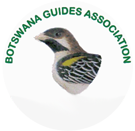The Okavango Delta is one of the most exclusive wilderness destinations in the world. This UNESCO World Heritage Site is the backdrop to wild Africa's grand spectacle, presenting unparalleled wilderness experiences in a serene inland delta unlike anywhere else on Earth. A journey to the Okavango Delta – deep inside Africa's pristine interior – is like no other, encompassing vast wetlands and expansive drylands. Visitors traverse the Delta's meandering waterways, passing palm- and papyrus-fringed islands, thick woodland, resplendent with lush vegetation, and teeming with rich wildlife.
The largest intact inland delta in the world, the Okavango Delta is situated deep within the Kalahari Basin. Fed by the Okavango River, originating in the Angolan Highlands to the north and often referred to as the 'jewel' of the Kalahari, the Delta comprises three main geographical areas:
- The Panhandle
- The Delta
- Drylands
The Panhandle begins as the Okavango River crosses into Botswana from Namibia at Mohembo, extending approximately 80 kilometres southeast. Contained within two parallel faults in the Earth's crust, the river runs deep and wide, with surrounding swamps flooded annually. The Panhandle's main tourist attractions are fishing, birding, and visiting the colourful villages along its western fringes, surrounded by papyrus beds and large stands of phoenix palms.
The river spills out over the fan-shaped Delta at Seronga, rejuvenating the landscape and creating stunning mosaics of channels, lagoons, pools, flooded grasslands, and thousands of islands.
The Okavango Delta can vary in size from 15 000 square kilometres during drier periods to a staggering 22 000 sq. km during wetter periods. Dominant plant species include reeds, real fan palm, acacia, sycamore fig, sausage trees, rain trees and African mangosteen.
Perennial swamps give way to seasonal marshes and flooded grasslands at the Delta's lower reaches. To the southeast, the third vegetation region of true drylands become evident. There are three significant landmasses here: the Matsebi Ridge, Chief's Island and the Moremi Tongue. Here the vegetation is predominantly Mophane, acacia and scrub bush, in an area dotted with salt pans. Large numbers of mammals retreat during the drier winter months to this region.
Major tourist attractions in the Delta and the dryland areas are game viewing, birdwatching and boating in the many waterways, often in the traditional mokoro dug-out canoe. The diversity and numbers of animals and birds are staggering. A recent overview of the Okavango region recorded 122 species of mammals, 71 species of fish, 444 species of bird, 64 species of reptiles and 1,300 species of flowering plants. A successful rhino reintroduction programme in the Okavango now puts White Rhino's population at approximately 35 and Black Rhino at 4.
Major species to be seen include the following: elephant, buffalo, giraffe, zebra, hippo, crocodile, rhino, red lechwe, waterbuck, reedbuck, duiker, impala, kudu, steenbok, wildebeest, hartebeest, sable, roan, tsessebe, lion, leopard, cheetah, genet, serval and caracal, along with an immense variety of land and water birds, resident and migratory, some of which are rare and endangered. However, game viewing can be seasonal, depending on the time of year and subsequent water and food availability.
Activity highlights in the Okavango Delta include the following:
- Ride in a dug-out canoe – Mokoro
- Game drives
- Speed boat cruises
- Sundowners in the wild
- Relaxation in camp
- Dinner under the stars
- Boma (around the fire setting) night experiences
- Activities differ from camp to camp
















